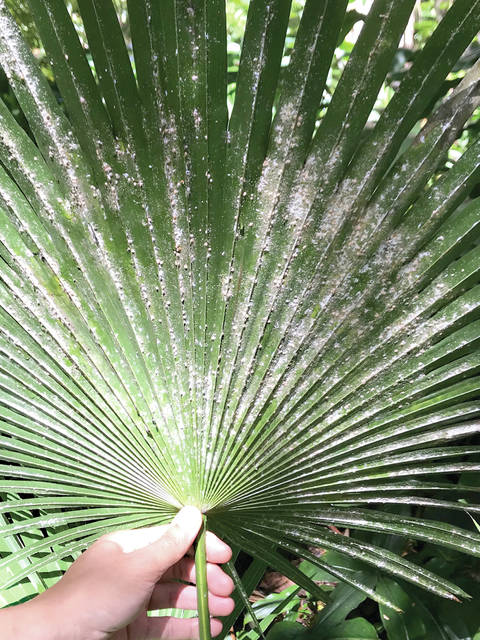Halloween brings to mind all the scary monsters, such as vampires, werewolves, ghosts and zombies. However, it is even scarier when you realize how vulnerable we are when it comes to problems caused by rats, pigs, insects and diseases we find in Hawaii.
Pig and rat populations carry diseases that can cause human illnesses.
Zika, dengue fever, malaria and other tropical mosquito-carried diseases are in the news more and more.
But that’s just the tip of the iceberg.
If you think insect problems are getting worse, you might be right but some insects have given us trouble for a long time.
Insect populations come and go in cycles. These depend on many factors including temperature, moisture, food supply and predators. In Hawaii, our climate seems to be getting warmer every year, with record highs constantly being broken.
Several examples of these cycles might be observed in your garden.
With warmer weather, you will see some increase in plant-sucking insects such as aphids and scale insects. You can actually increase the aphid population by applying excessive amounts of nitrogen so the plants grow lush and tender. If you fertilize with a balanced, slow-release organic fertilizer, you are less likely to have a population explosion of aphids.
A common problem now is the hibiscus blister mite, also known as the hibiscus erineum mite or hibiscus leaf crumpling mite. Since we have such a big supply of hibiscus in Hawaii, it is natural that something would come along to feed on the plants. Interestingly, where the mite first began doing damage, natural predators such as Phytoseiid mites are causing a decrease in the blister mite population.
Thus, nature helps us by bringing things into balance.
From the beginning, man has been prey to the lusts and appetites of hordes of insects and other pests. Very early in history, humans devised methods of combating these pests that “bugged” them. More often than not, manual dexterity in the form of slapping and picking was the prime instrument of insect control.
In the course of development, humans learned some substances applied to the body discouraged insect aggression. Applying a grease coating to the skin was one method. Another was to never take a bath. This originated the idea of repellents. If you are planning camping or hiking trips, the use of an insect repellent is a must, so let’s learn something about them.
Early repellents consisted largely of plants or plant products, though animal products also were employed.
The earliest truly-chemical repellent in widespread use was Bordeaux mixture for plant diseases. Pliny recommended a mixture of red earth and tar to repel ants. It also is known that the Greeks and Romans painted the backs of parchment manuscripts with cedar wood oil to prevent injury by insects. Parts of the neem tree have been used for thousands of years in India as insect repellents, but also have fungicidal and bactericidal properties.
It was not until after the end of the 19th century that repellents were marketed in the Western World.
More than 9,000 chemicals have been tested as repellents for mosquitoes and other biting flies, chiggers, ants, fleas and ticks, but only a few have proven effective and also safe for general application to the skin or clothing. Some of the effective materials have little or no odor and give almost complete protection for 2-8 hours as skin-applied repellents and for several days for repellents applied to clothing, even in areas where insect populations are large.
Toxicologists conducted extensive tests with off-the-shelf repellents and found them safe for use as skin applications. They can be toxic if taken internally. Occasionally, there are people who are allergic to certain materials that passed toxicological tests. Such people might show a slight rash or other minor skin reactions. Any of the repellents might cause some smarting when applied to the mucous membranes or to areas where the skin is especially tender, such as the eyelids.
There are numerous natural repellents, such as lemon eucalyptus oil, citronella and garlic, with some effectiveness that you might try as well. When it comes to pigs, some folks have tried dog hair, heavily scented soaps or mothballs applied around valuable plants to discourage their rutting.
When it comes to all the mosquito- and tick-borne diseases such as zika, chikungunya, dengue and tick fevers, it is important to protect ourselves and our loved ones.
Gardening is fun, but if bugs are bugging you or your plants, repellents are the first line of defense.

